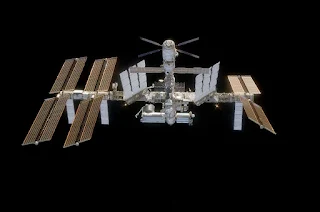Demystifying Sunita Williams’ Return: A Journey from Space to Earth
Sunita Williams, one of NASA’s most accomplished astronauts, has made headlines for her remarkable space missions. Her return to Earth is a fascinating process that involves cutting-edge technology, precise calculations, and meticulous planning. In this article, we’ll break down the step-by-step process of how Sunita Williams returned to Earth and explore the technology that made it possible.
Who is Sunita Williams?
Sunita Williams is a veteran NASA astronaut with an impressive record:
- Spaceflights: She has completed multiple missions to the International Space Station (ISS).
- Spacewalks: She holds the record for the most spacewalks by a woman.
- Inspiration: Her achievements have inspired countless people, especially women, to pursue careers in STEM.
The Step-by-Step Process of Returning to Earth
Returning from space is a complex and carefully orchestrated process. Here’s how Sunita Williams made her journey back to Earth:
1. Preparing for Departure
- **Mission Completion**: Once her mission on the ISS was complete, Sunita and her crew began preparing for their return. - **Cargo Transfer**: Essential scientific samples and equipment were loaded into the spacecraft. - **Health Checks**: Astronauts underwent medical evaluations to ensure they were fit for the journey.
2. Boarding the Spacecraft
- **Spacecraft Used**: Sunita Williams returned to Earth aboard a **Soyuz spacecraft**, the most reliable vehicle for crewed missions to and from the ISS. - **Crew Configuration**: The Soyuz typically carries three astronauts, including the commander and flight engineers.
3. Undocking from the ISS
- **Separation**: The Soyuz spacecraft undocked from the ISS using precision thrusters. - **Safety Checks**: The crew verified that all systems were functioning correctly before moving away from the station.
4. Deorbiting the Spacecraft
- **Orbital Maneuvering**: The Soyuz fired its engines to slow down and begin its descent toward Earth. - **Reentry Angle**: The spacecraft had to enter Earth’s atmosphere at a precise angle (around 1.2 degrees) to avoid burning up or bouncing back into space.
5. Atmospheric Reentry
- **Heat Shield Activation**: The Soyuz’s heat shield protected the spacecraft from temperatures exceeding **1,650°C (3,000°F)** during reentry. - **Plasma Blackout**: Communication with the spacecraft was temporarily lost due to the plasma generated by the intense heat.
6. Parachute Deployment
- **Drogue Chutes**: Small parachutes deployed first to stabilize the spacecraft. - **Main Parachute**: A large parachute slowed the Soyuz to a safe landing speed of about **7 meters per second (15 mph)**.
7. Soft Landing
- **Retro Rockets**: Just before touchdown, retro rockets fired to further reduce the landing speed. - **Landing Site**: The Soyuz landed in the steppes of Kazakhstan, where recovery teams were waiting.
8. Post-Landing Procedures
- **Recovery Teams**: Helicopters and ground teams quickly reached the landing site to assist the crew. - **Medical Checks**: Sunita and her crewmates underwent immediate medical evaluations to assess their health after months in microgravity. - **Debriefing**: The astronauts provided mission updates and shared their experiences with NASA and Roscosmos teams.
The Technology Behind the Return
The safe return of astronauts like Sunita Williams relies on advanced technology and engineering. Here’s a closer look at the key components:
1. Soyuz Spacecraft
- **Design**: The Soyuz consists of three modules—orbital, descent, and service. - **Reliability**: It has been the primary vehicle for crewed missions to the ISS for decades.
2. Heat Shield
- **Material**: Made of **ablative material** that burns away to dissipate heat. - **Function**: Protects the crew from extreme temperatures during reentry.
3. Parachute System
- **Drogue Chutes**: Stabilize the spacecraft during initial descent. - **Main Parachute**: Slows the spacecraft to a safe landing speed.
4. Retro Rockets
- **Purpose**: Provide a final braking force to ensure a soft landing. - **Timing**: Fired just seconds before touchdown.
5. Recovery Systems
- **Helicopters and Ground Teams**: Ensure quick recovery of the crew and spacecraft. - **Medical Support**: Provide immediate care to astronauts after landing.
Challenges of Returning to Earth
Returning from space is not without risks:
- Reentry Heat: The spacecraft must withstand extreme temperatures.
- Precision Landing: A slight error in the reentry angle can lead to catastrophic consequences.
- Health Risks: Astronauts face physical challenges after months in microgravity, such as muscle atrophy and bone density loss.
Why Sunita Williams’ Return Matters
Sunita Williams’ safe return is a testament to human ingenuity and the incredible collaboration between NASA, Roscosmos, and other space agencies. Her missions contribute to scientific research, inspire future generations, and pave the way for even more ambitious space exploration.
Ready to Learn More About Space Exploration?
Sunita Williams’ journey is just one example of the incredible feats achieved in space exploration. Whether you’re a space enthusiast or simply curious about the cosmos, there’s always more to discover.




.jpg)





